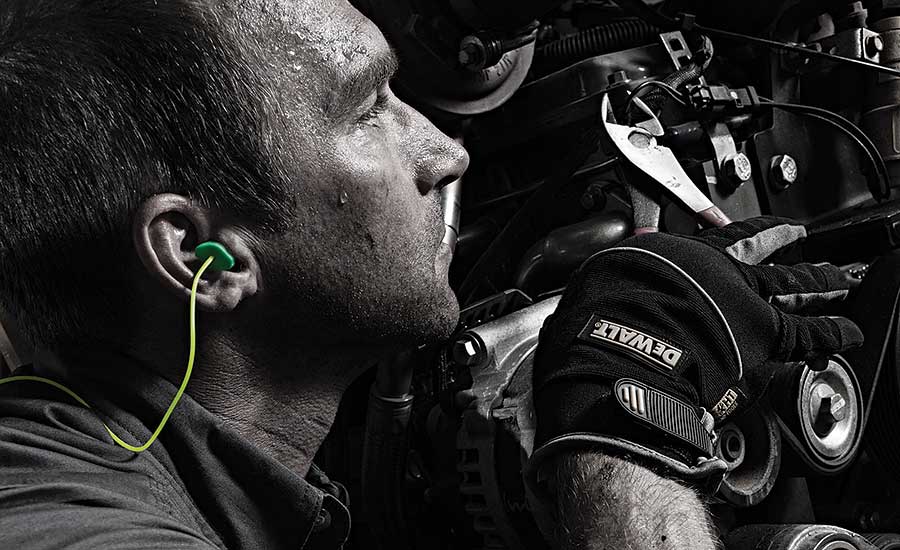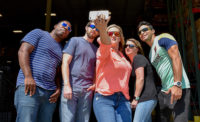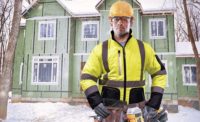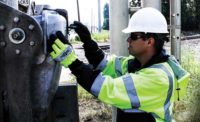Many different types of hearing protection devices (HPDs) are available in the U.S. marketplace, and all share two attributes:
- The packaging for the hearing protector will have the required U.S. Environmental Protection Agency (EPA) labeling with the hearing protector’s Noise Reduction Rating or NRR.
- The Noise Reduction Rating that appears on the EPA label is supposed to be evaluated under laboratory testing specified by the American National Standards Institute in ANSI S3.19.1974.
The Noise Reduction Rating ( NRR) is an estimate of the amount of potential protection a hearing protection device will provide in a noisy environment. It is simply the decibel (dB) noise attenuation for the earplug or earmuff based on laboratory test data.
The higher the NRR number, greater is the potential for the protector to reduce noise. Currently, the highest NRR rating for earplugs is 33, and the highest available NRR rating for earmuffs is 31. Do not assume that the HPD with the highest NRR is the best choice for your workplace. Over-protection can be harmful when it leaves workers with the inability to hear warning signals, their co-workers, and important commands.
When the NRR is not really real
Unfortunately, the Noise Reduction Rating does not always predict the level of protection workers will actually receive in the field. The NRR is often viewed as inflated and overly optimistic because the NRR does not take into account:
- The way the product is worn—improper fit
- The size and condition of the HPD
- The comfort of the device, which if uncomfortable can compromise the amount of time a worker actually wears his or her HPD
- The motivation and training of the worker
Five important criticisms of the NRR
The Noise Reduction Rating has been frequently criticized for being overly optimistic in real-world, workplace conditions. In the article “The Naked Truth about NRRs” by Elliott H. Berger, Senior Scientist and recipient of the National Hearing Conservation Association’s (NHCA) Lifetime Achievement Award, Berger states, “Emphasis on noise reduction data as a purchasing criterion, and reliance on such numbers for predicting protection, is both unwarranted and potentially deleterious to the effectiveness of a hearing conservation program.”
Five reasons for the NRR’s “Not Really Real” criticism include:
- The NRR doesn’t take into account the misuse and improper fit of the earplug or hearing protector by the user in the real world. Thus, the NRR has a disclaimer on the EPA label that states “when used as directed.”
- Consumers and end users have taken the NRR too literally, expecting HPDs to attenuate or block noise in the workplace as they did in the laboratory.
- The ANSI S3.19 standard is now outdated. Even though new testing standards are available such as ANSI S12.6, the EPA still requires testing to the S3.19-1974 standard.
- Some hearing protector devices are tested in labs without proper accreditation, so their methods often do not comply with required standards.
- Test results are sometimes misinterpreted by suppliers.
OSHA’s NRR correction factor
To adjust the NRR so that it more appropriately mirrors workplace conditions, OSHA recommends a 50-percent NRR Correction Factor. OSHA’s Appendix IV:C. Methods for Estimating HPD Attenuation states that “OSHA's experience and the published scientific literature have shown that laboratory-obtained real ear attenuation for HPDs can seldom be achieved in the workplace. To adjust for workplace conditions, OSHA strongly recommends applying a 50-percent correction factor when estimating field attenuation.”
Preventing hearing loss
According to the World Health Organization (WHO), Noise-Induced Hearing Loss “is the most common, permanent, and preventable occupational injury in the world.” It may happen suddenly from an explosive type of blast or gradually over time as a worker is continuously exposed to high noise levels without wearing proper hearing protection. Hearing loss has become the third-leading health issue in America and adversely affects millions of workers in manufacturing, mining, the military, agriculture, landscaping, and construction. The really sad part is that hearing loss is preventable but once it is acquired, it is permanent and irreversible.
Whenever employee noise exposures are at or above an eight-hour time-weighted average (TWA) of 85 dBA, the workplace is required to have a Hearing Conservation Program (HCP).
Training & motivation
Educate your workers and safety specialists about hearing loss by distributing informational brochures, by placing posters and caution signs in key traffic areas, and through annual training programs. Annual training programs are required by OSHA “whenever employee noise exposures are at or above an eight hour time-weighted average (TWA) of 85 dBA… which is considered the action level.” In addition to group training, one-on-one training can be even more effective, especially when it comes to the insertion and proper fit of foam earplugs.
According to OSHA, “Workers who understand the reasons for the hearing conservation programs and the need to protect their hearing will be more motivated to wear their protectors and take audiometric tests.”
Earplugs
When choosing foam earplugs, make sure the earplugs fit properly, are non-irritating, comfortable, and offer the appropriate level of NRR protection. Bullet, barrel, bell, and winged shapes exist to fit a large variety of ear canal shapes and sizes. Disposable foam plugs are ideal for big companies with lots of workers who go through large quantities of plugs quickly.
Earmuffs & banded protection
For short term or intermittent use, earmuffs and banded hearing protectors are an excellent solution as they can be fitted and removed quickly.
Earmuffs can be either passive or electronic. Both are easy to fit properly and come in a variety of shapes, sizes, and styles to fit a wide range of users. NRRs also vary greatly and can be as low as 17dB or as high as 30dB. Earmuffs can be worn over the head, behind the ear, under the chin, and as a hard hat attachment. Because earmuffs are very visible they make it easy for safety officers to check for compliance.
Banded hearing protection can be a good lightweight alternative to earmuffs. Banded hearing protection is easy to remove and is designed to hang conveniently around the neck.
Hearing impacts lives at work & home
When an employee can’t hear properly, his or her performance at work declines and the impairment might cause more accidents and injuries to occur. Not only that, but the employee’s entire lifestyle is compromised by the hearing loss. So protect workers’ hearing every day and specify quality hearing protection that is comfortable, safe, easy to use, and with an appropriate NRR for the application.
For more information, visit www.Radians.com or call 1-877-723-4267.



